Traditional Portuguese Outfits for Men are:
- Intricately embroidered vests and tailored jackets
- High-waisted trousers crafted for both style and practicality
- Distinctive headwear that highlights regional heritage
- Detailed waistcoats and accessories that reflect artisanal craftsmanship
Traditional Portuguese Outfits for Women are:
- Vibrant, intricately embroidered dresses and blouses
- Flowing skirts paired with delicate lace details
- Elegant accessories including long pure gold earrings
- A harmonious blend of traditional patterns and modern flair
The traditional Portuguese outfit is a vibrant ensemble that embodies Portugal's rich cultural heritage and diverse regional identities. It features distinctive elements such as intricately embroidered garments, bright and rich costumes, and refined accessories like long pure gold earrings that highlight centuries of craftsmanship. Worn during special occasions and festivals, these outfits serve as a definitive symbol of Portuguese cultural identity and the enduring legacy of its traditional dress.
Traditional Portuguese Outfits for Men
Traditional Portuguese outfits for men include intricately embroidered vests, high-waisted trousers, and distinctive headwear that collectively embody Portugal’s rich cultural heritage. Each ensemble is meticulously crafted to showcase regional diversity and the enduring artistry of traditional dress. Worn during festivals, ceremonies, and daily life in rural communities, these outfits serve as a definitive symbol of Portuguese identity and pride.
1. Minhoto Suit
The Minhoto suit, associated with the Minho region, typically features high-waisted woolen trousers, a fitted vest, and an embroidered jacket. A bright sash around the waist and a traditional black hat often complete the look.
This traditional attire is much more than just a style statement—it serves as a vibrant symbol of regional pride and cultural heritage. Often showcased during local festivals and celebrations, the Minhoto suit reflects the skill and artistry of local craftspeople who meticulously incorporate historical motifs and regional symbols into each piece, preserving a legacy of tradition that has been passed down through generations.
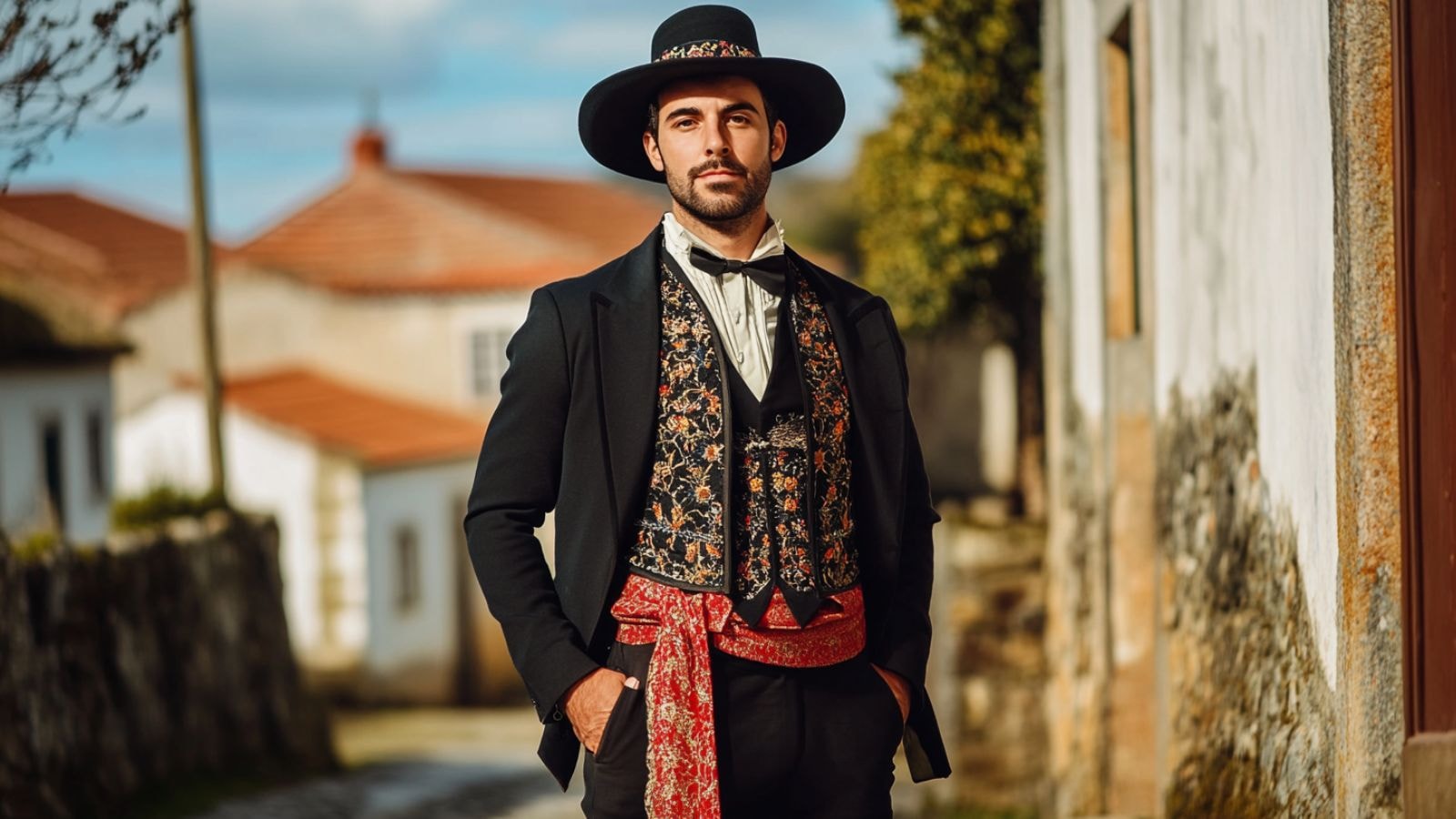
2. Campino Attire (Ribatejo)
From the Ribatejo region, Campino attire is strongly associated with cattle herders. Men often wear tight-fitting trousers, a short jacket (jaqueta), a waistcoat, and a wide-brimmed hat (chapéu de aba larga).
In addition to its practical design for rural work, the Campino ensemble has evolved into a proud emblem of regional identity. The attire not only underscores the hardworking nature of the cattle herders but also plays a significant role in local festivities and cultural exhibitions, where its distinctive style is celebrated as a testament to the enduring traditions of the Ribatejo region.
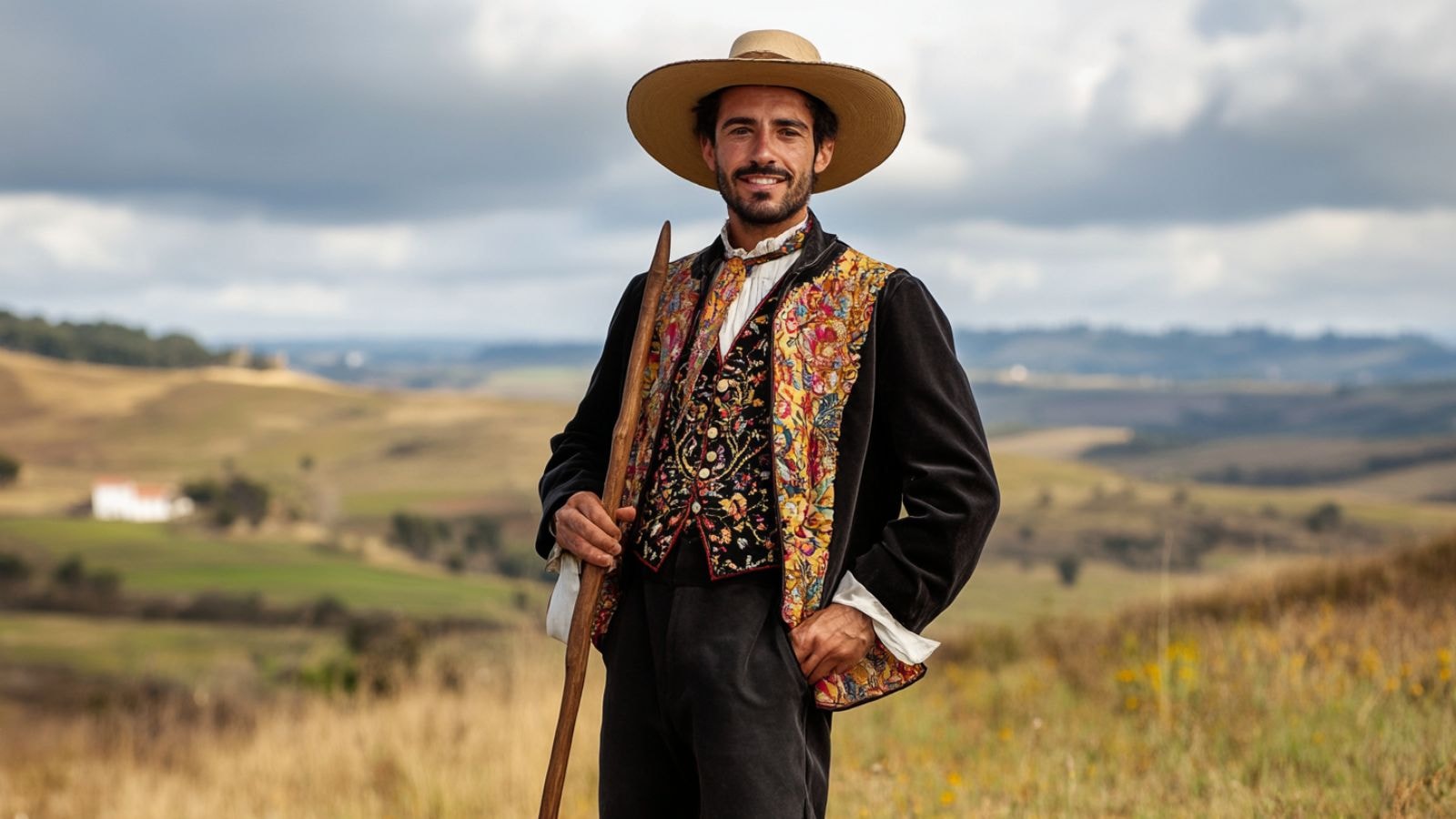
3. Alentejo Rancher Ensemble
The Alentejo region’s rancher look highlights sturdy, functional clothing. It usually includes a wool cloak or cape (capote), a wide-brimmed hat, and durable trousers designed for farm work.
This ensemble mirrors the rugged spirit and practicality essential for life in the Alentejo countryside. Crafted to endure long days under the sun and sudden weather changes, the attire not only supports the demanding tasks of rural labor but also reinforces a deep connection to the land and its enduring traditions.
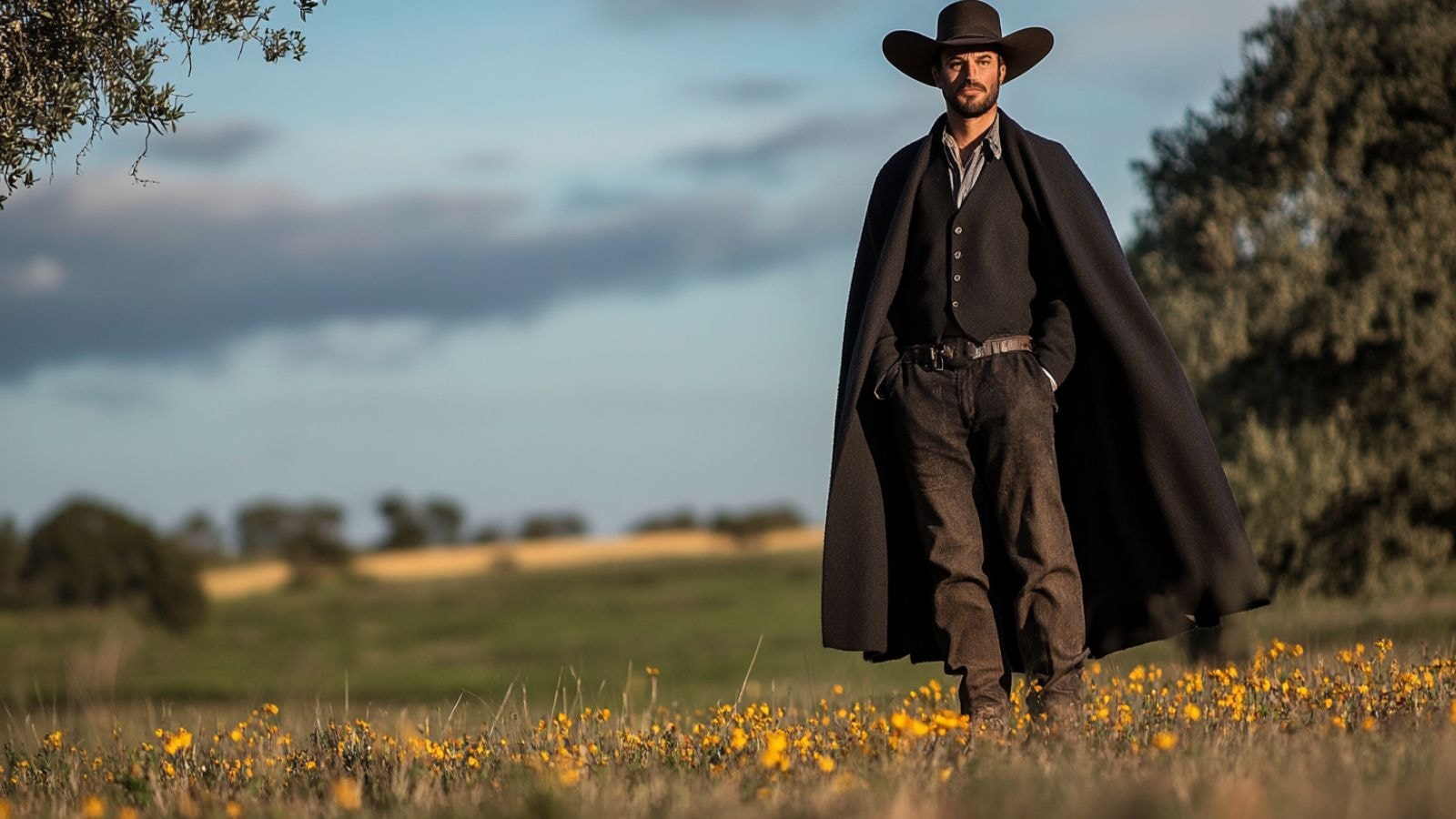
4. Coimbra Academic Suit
Often seen at the University of Coimbra, this academic suit features a black suit and cape (traje academico), symbolizing knowledge and tradition.
This formal attire is steeped in history and serves as a visual emblem of the University’s enduring scholarly legacy. Worn during ceremonies and academic gatherings, the suit fosters a deep sense of pride and unity among its wearers, representing not only individual achievement but also the collective cultural and intellectual heritage that has defined Coimbra for centuries.
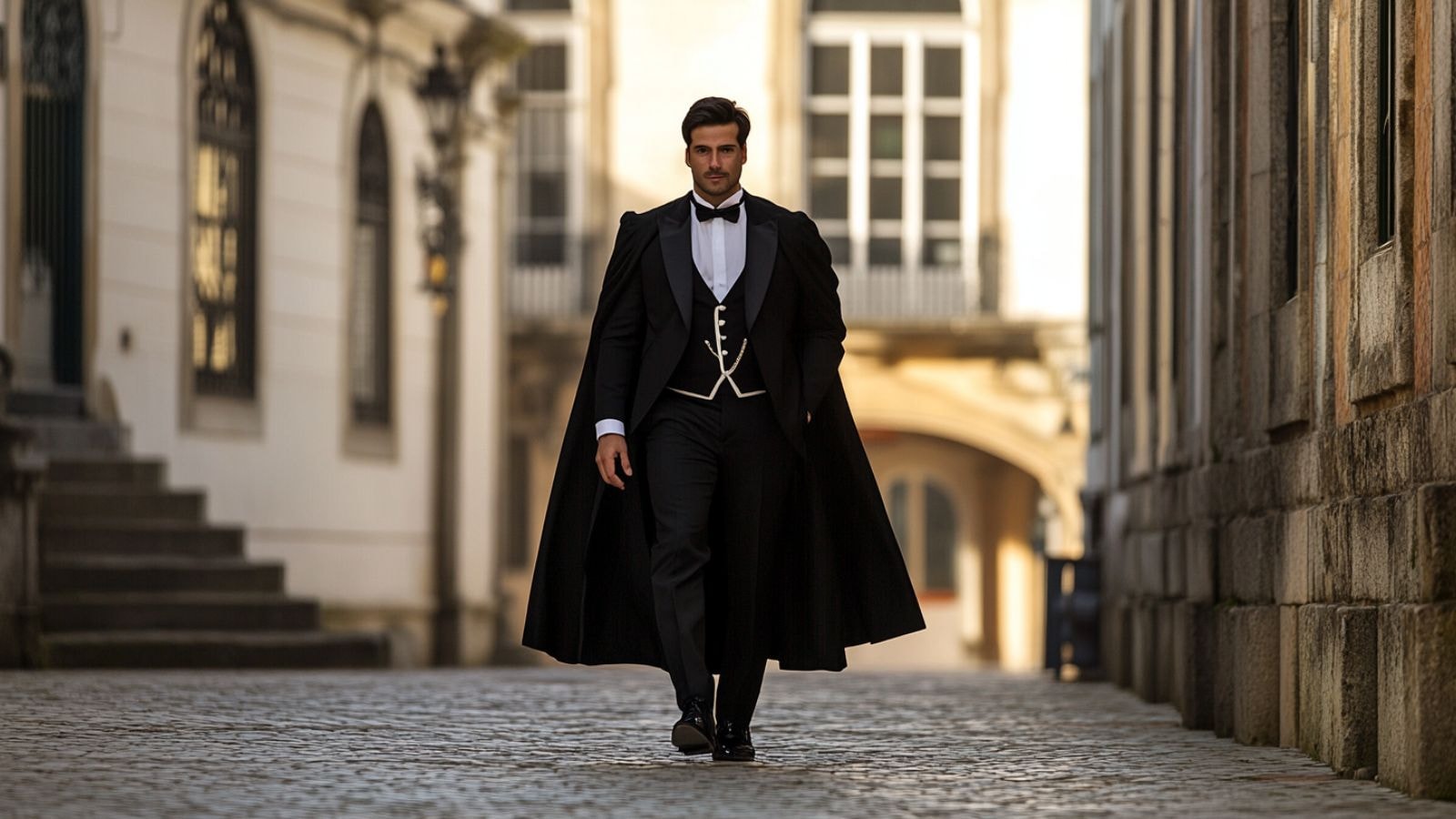
5. Fato do Douro (Douro Region)
In the Douro wine region, men might wear a layered outfit suitable for vineyard work—trousers, a waistcoat, and a jacket, often with a cloth cap.
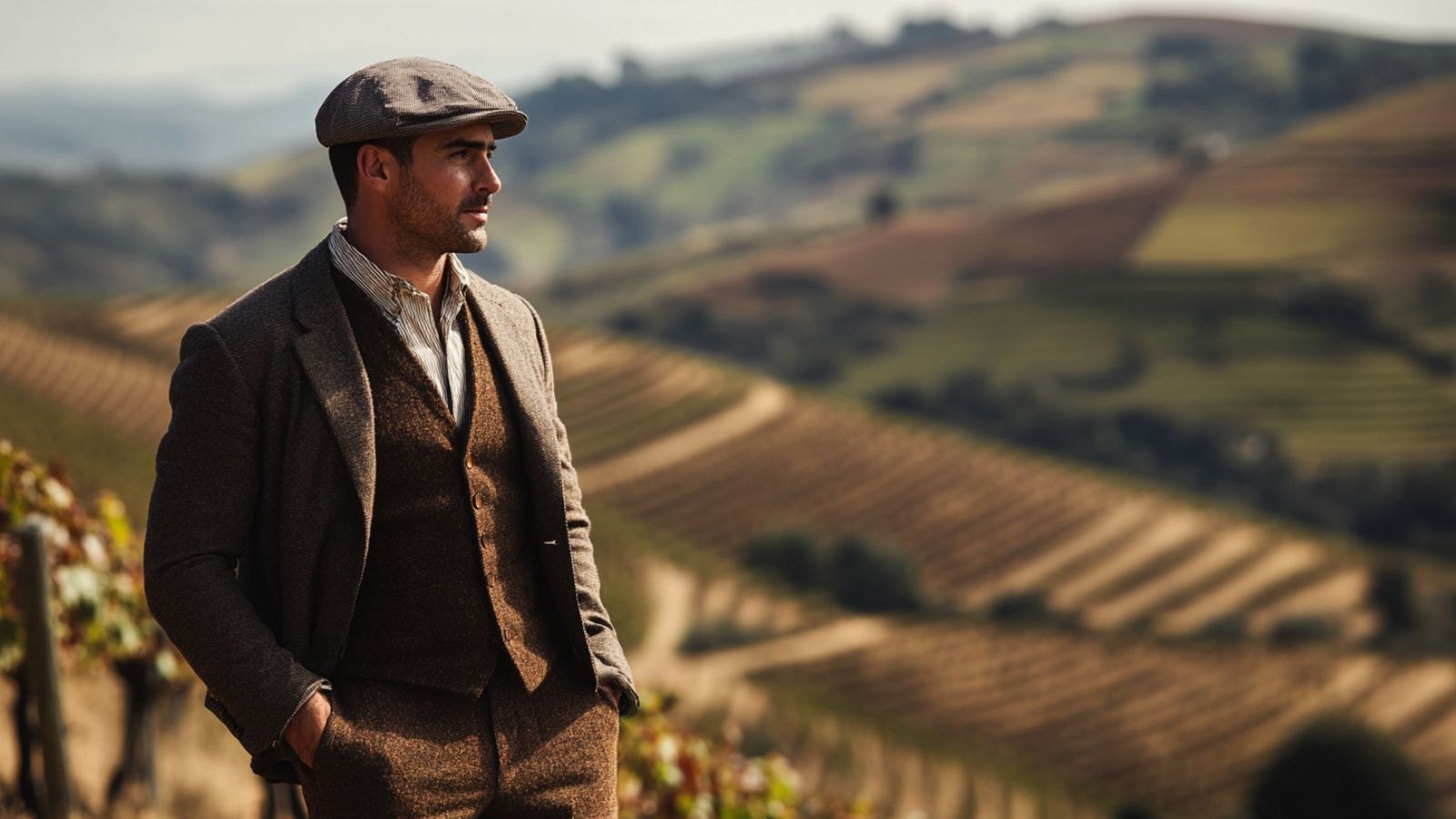
6. Arraiolos-Inspired Vest and Trousers
Arraiolos is famous for its tapestries and carpets, influencing local embroidery styles. Men might wear an embroidered vest or jacket showcasing traditional Arraiolos patterns.
These decorative elements go beyond mere adornment. They embody a long-standing artistic tradition where each intricate stitch and vibrant motif tells a story of cultural heritage. Crafted by skilled artisans whose techniques have been handed down through generations, these embroidered pieces serve as living testaments to the region's rich legacy and enduring pride in its creative excellence.
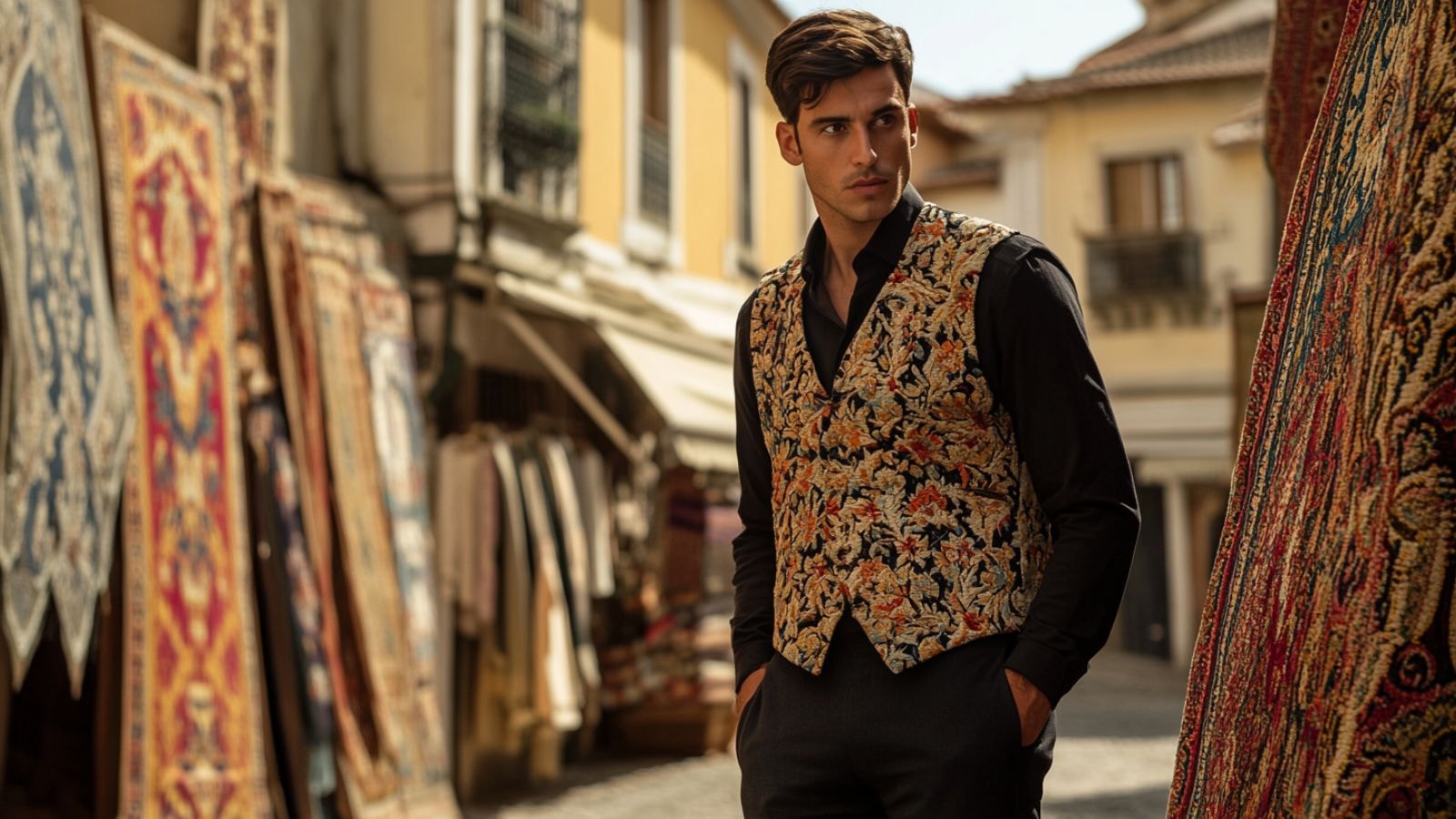
7. Fisherman’s Garb (Costa Nova)
Along Portugal’s coastal areas, traditional fisherman attire includes striped shirts, sturdy trousers, and often a knitted cap.
This practical ensemble is a living tribute to the enduring maritime spirit of coastal communities. Designed to withstand the challenges of life at sea, the striped shirts and robust trousers not only provide durability but also evoke the rich nautical heritage that has shaped local identities for generations. The knitted cap, worn through countless voyages, serves as a timeless emblem of resilience and the deep-rooted connection to the ocean that continues to define Portugal's coastal way of life.
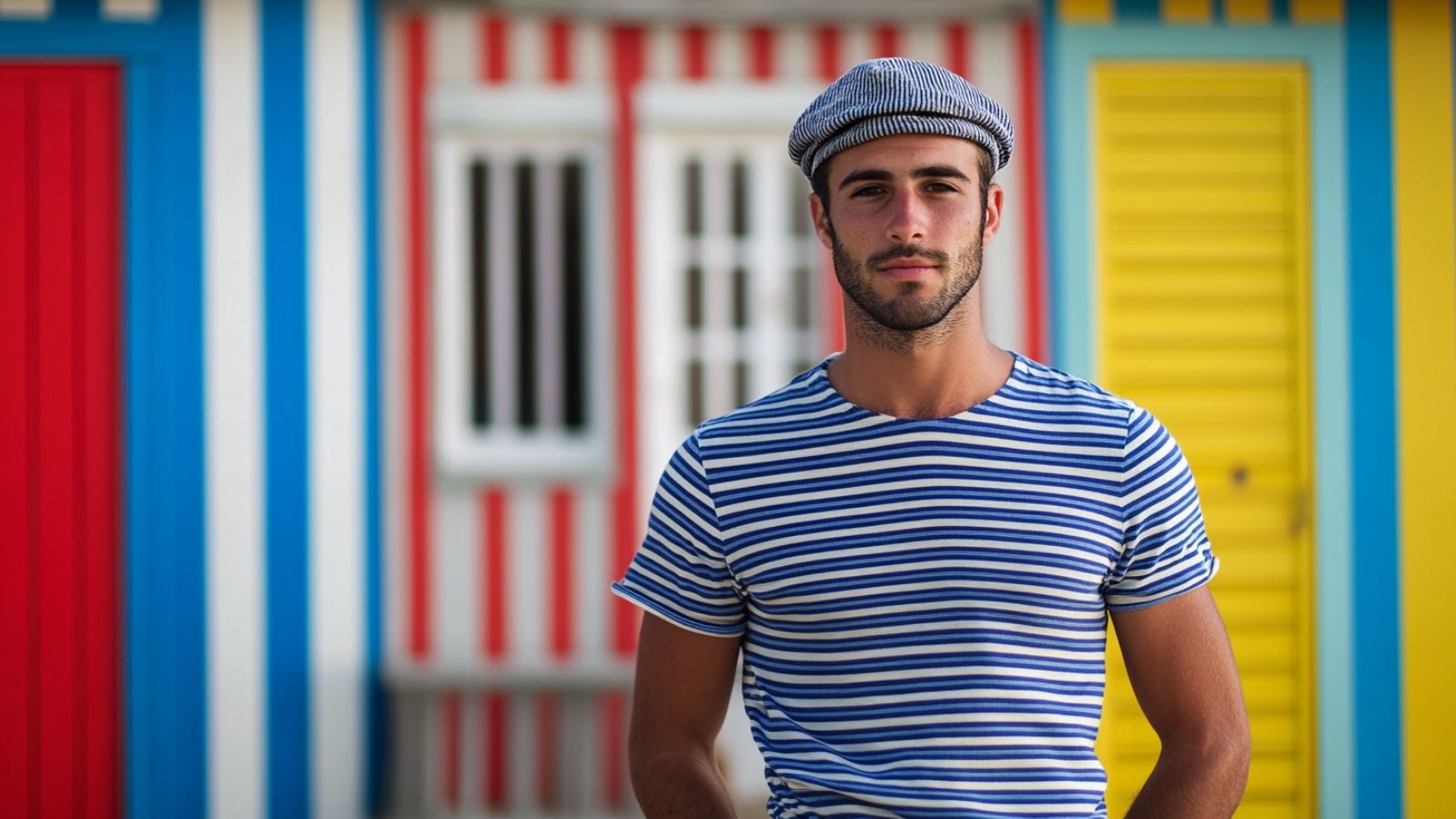
8. Braga Festive Suit
During festivities in Braga, men wear suits that incorporate local embroidery and bright sashes, showcasing celebratory flair.
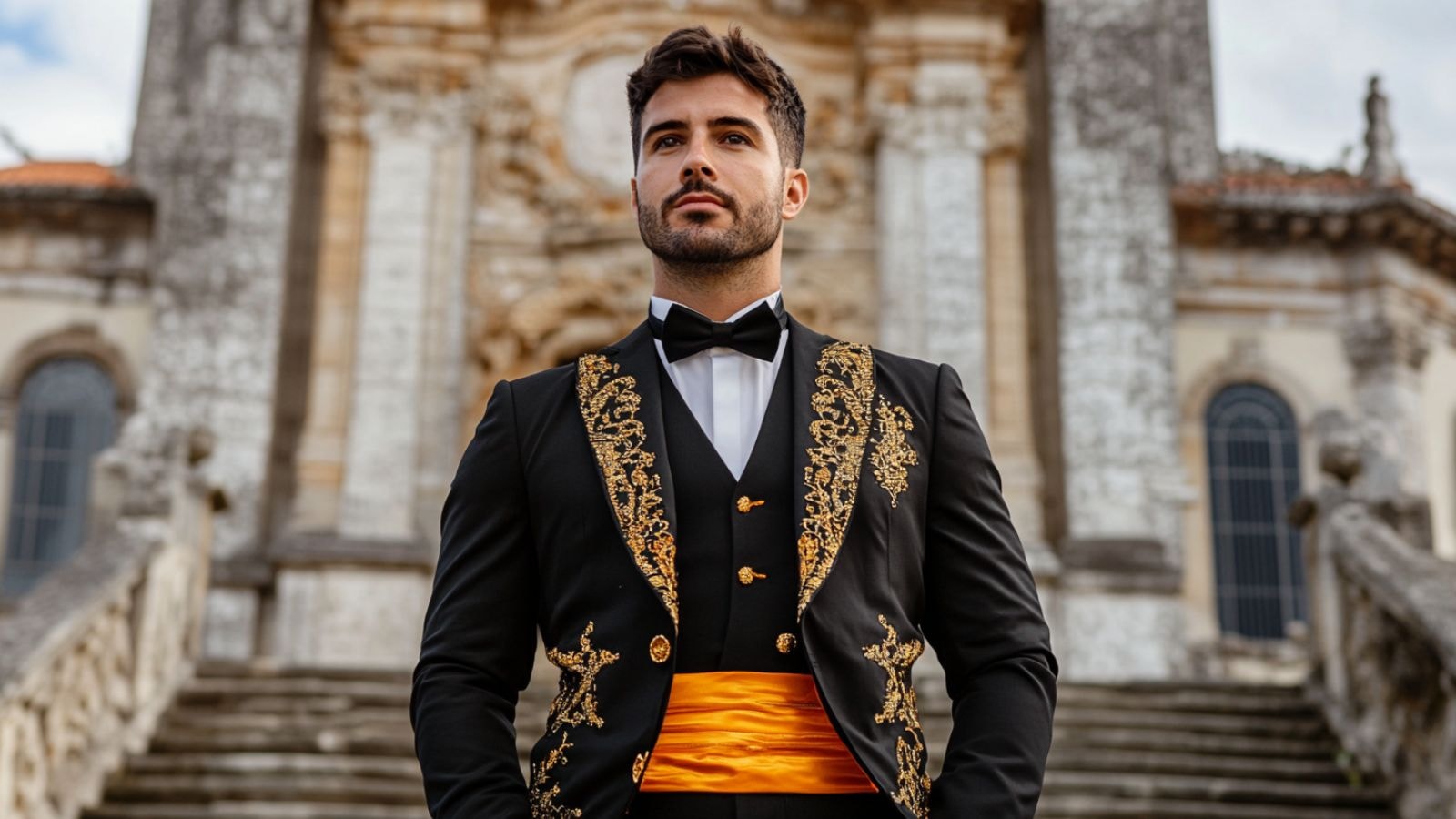
9. Moleiro (Miller) Costume
Some rural celebrations feature the moleiro costume, representing mill workers. It consists of rustic trousers, a linen shirt, and a broad belt for carrying milling tools.
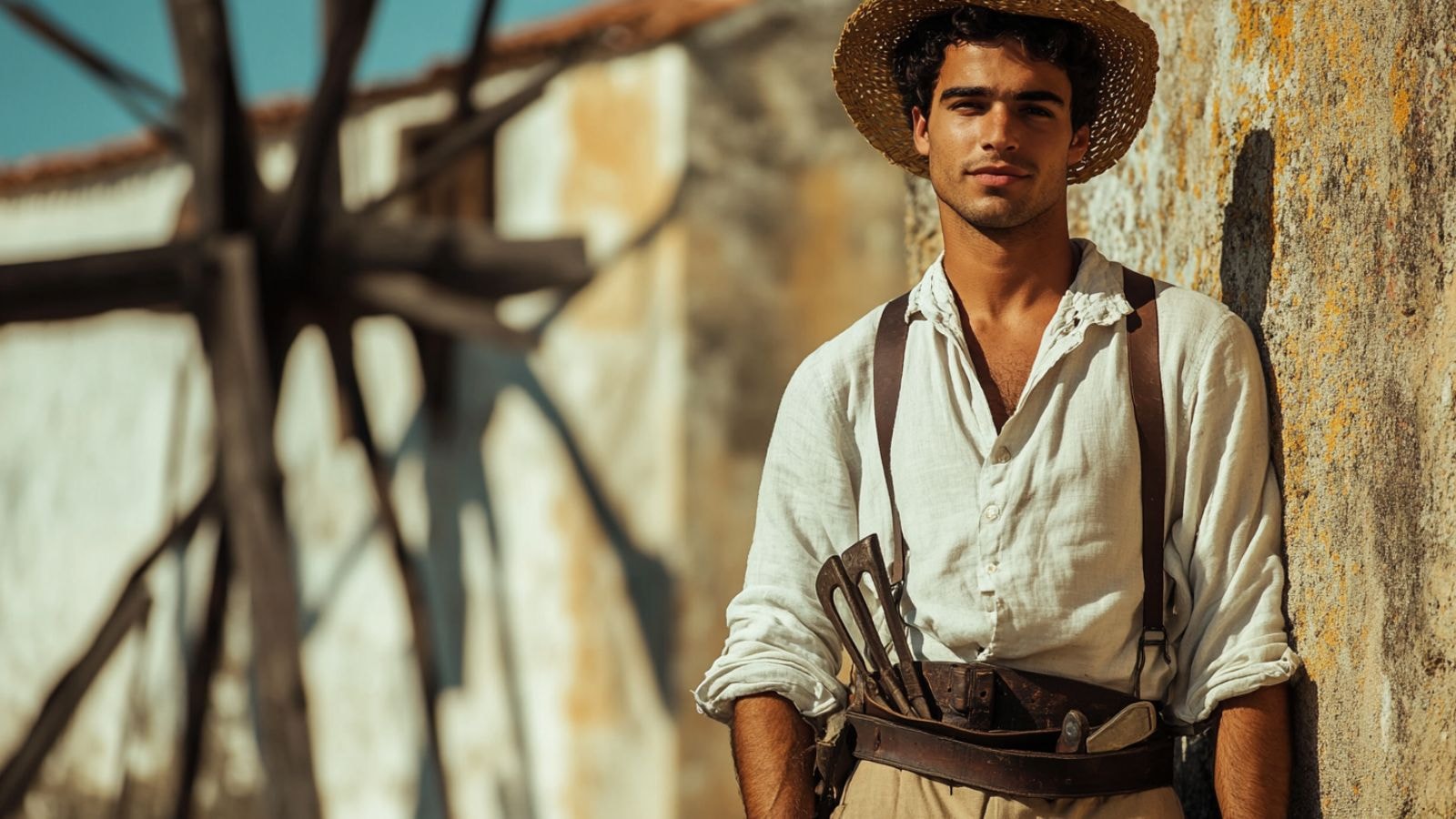
10. Vianense Men’s Attire (Viana do Castelo)
The men’s version of Viana do Castelo attire typically involves black trousers, a white shirt, and a short vest with distinctive embroidery, reflecting the region’s folklore traditions.
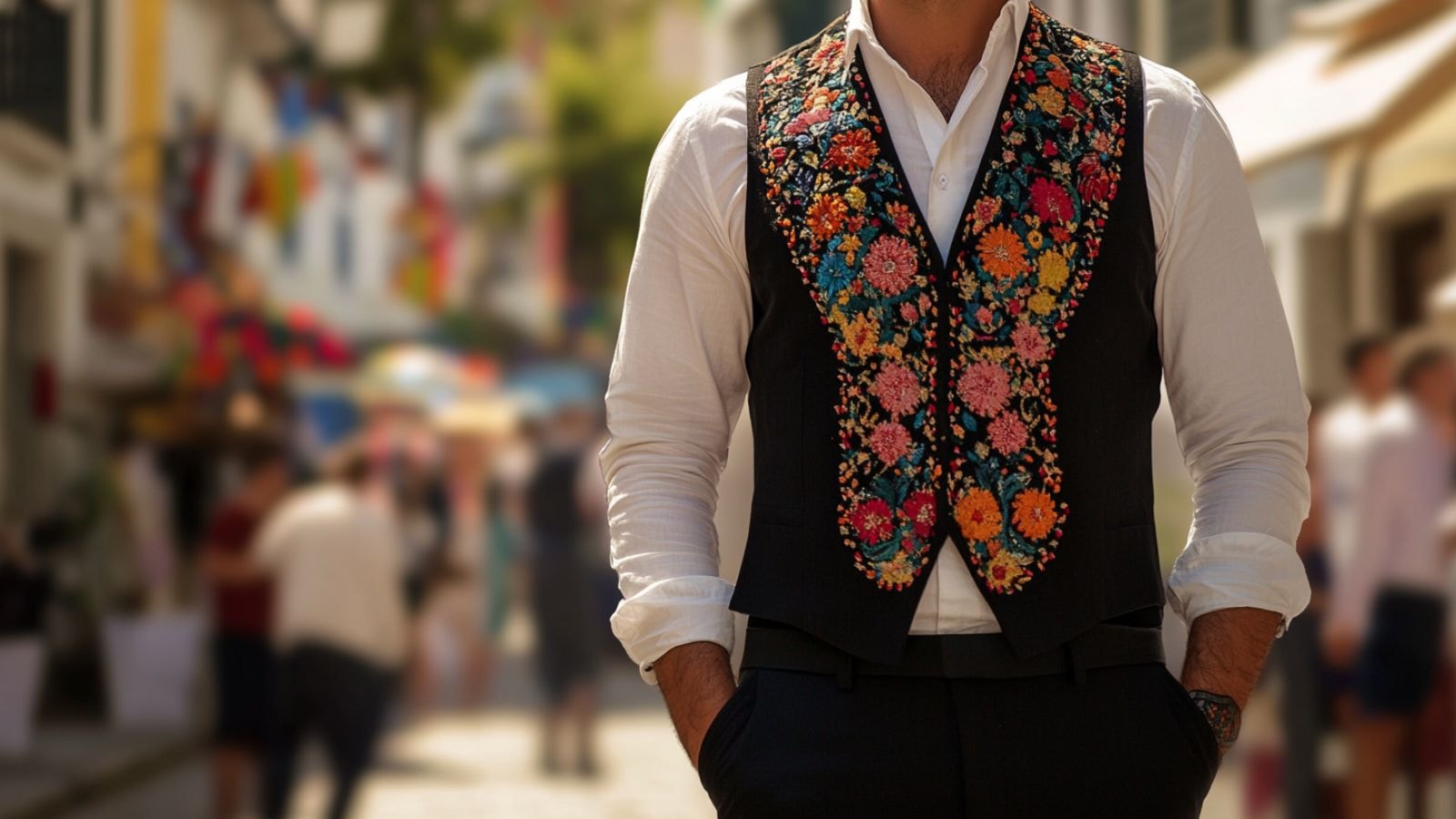
Traditional Portuguese Outfits for Women
Traditional Portuguese Outfits for Women include vibrant, intricately embroidered dresses, flowing skirts, and delicately designed blouses paired with elegant accessories that highlight the feminine charm of regional traditions. These ensembles often feature intricate lace details and long pure gold earrings, serving as a testament to centuries of artisanal craftsmanship. Worn during festive celebrations and cherished as everyday expressions of cultural pride, these outfits embody the rich heritage and enduring spirit of Portuguese identity.
1. Viana do Castelo Costume (Traje da Viana)
Often recognized for its bright colors and heavy embroidery, the female Viana costume includes a full skirt, embroidered apron, blouse with puffed sleeves, and a headscarf.
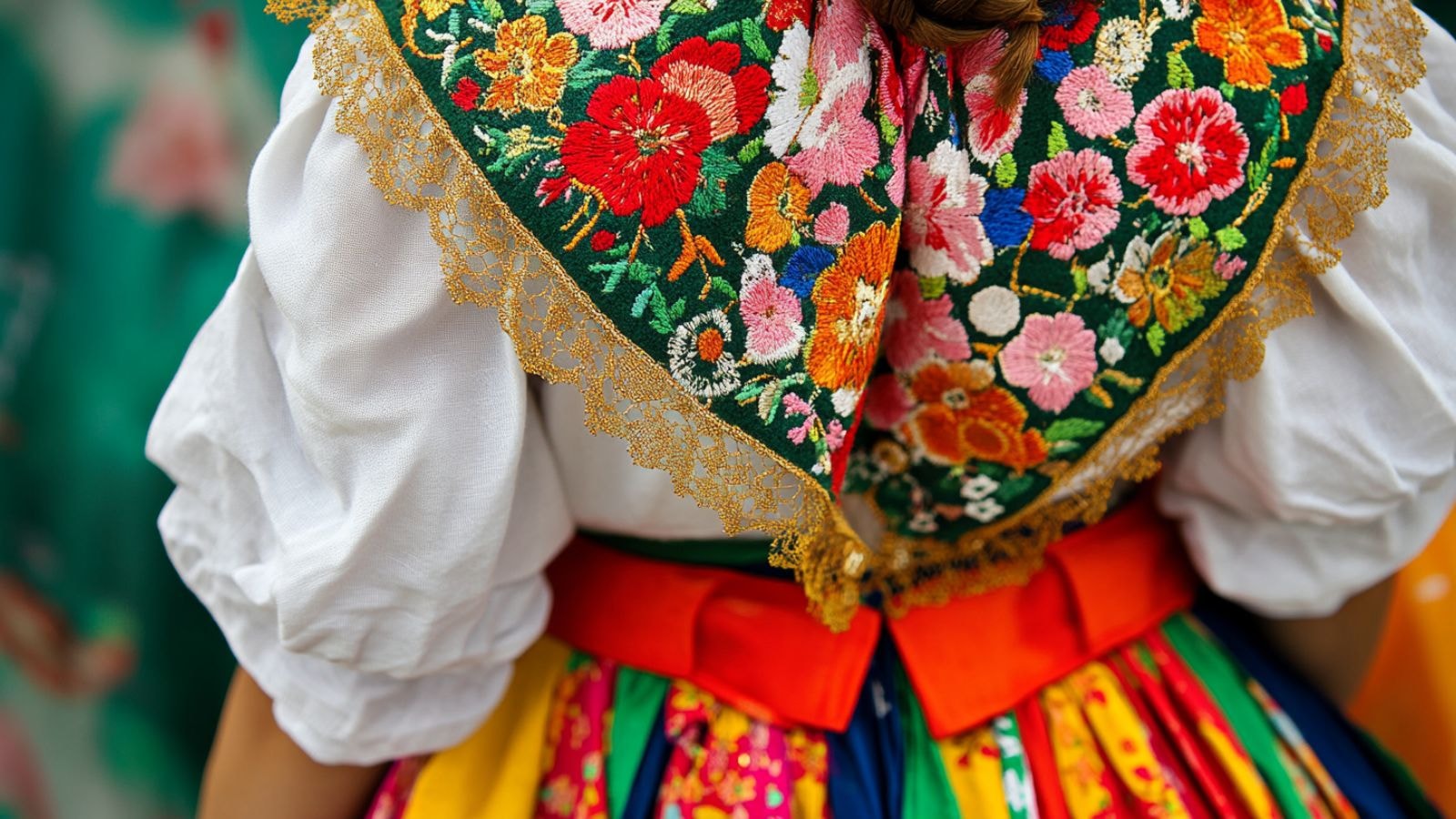
2. Minho Lavradeira Dress
The Lavradeira dress is characterized by a striped skirt in bright colors, a richly embroidered apron, and a white cotton blouse with delicate lacework.
This attire serves as a vibrant celebration of rural femininity and artistic heritage. The interplay of bold hues and intricate details not only highlights exceptional craftsmanship but also symbolizes a deep-rooted connection to the traditions and communal stories passed down through generations, making it a cherished emblem during festive and cultural gatherings.
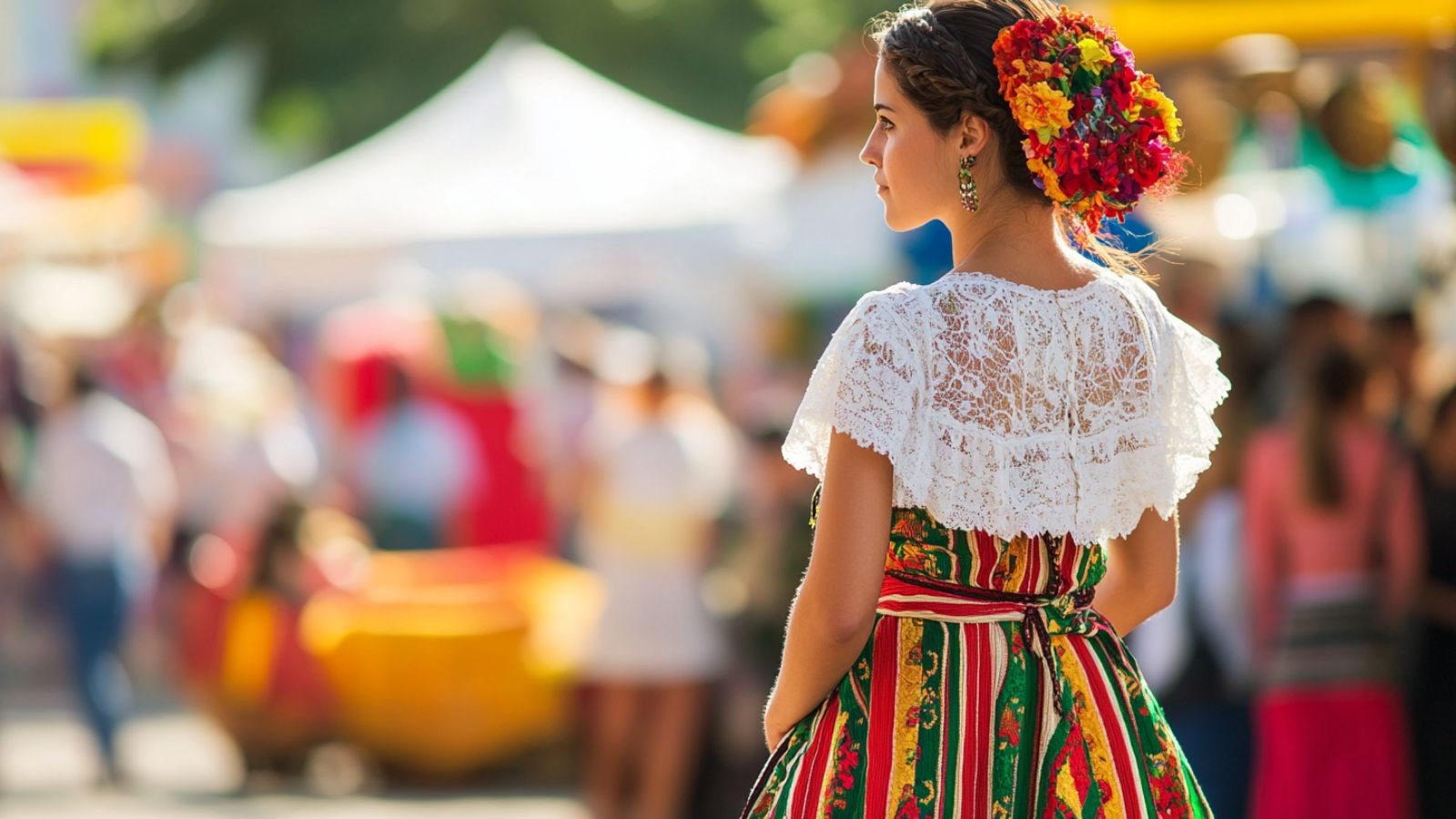
3. Brincos à Rainha (Jewelry-Focused Ensemble)
Although technically jewelry, Brincos à Rainha (Queen earrings) are a staple in Portuguese women’s traditional attire, particularly in Minho. Often paired with a simple black skirt, a white blouse, and a shawl that lets the earrings stand out.
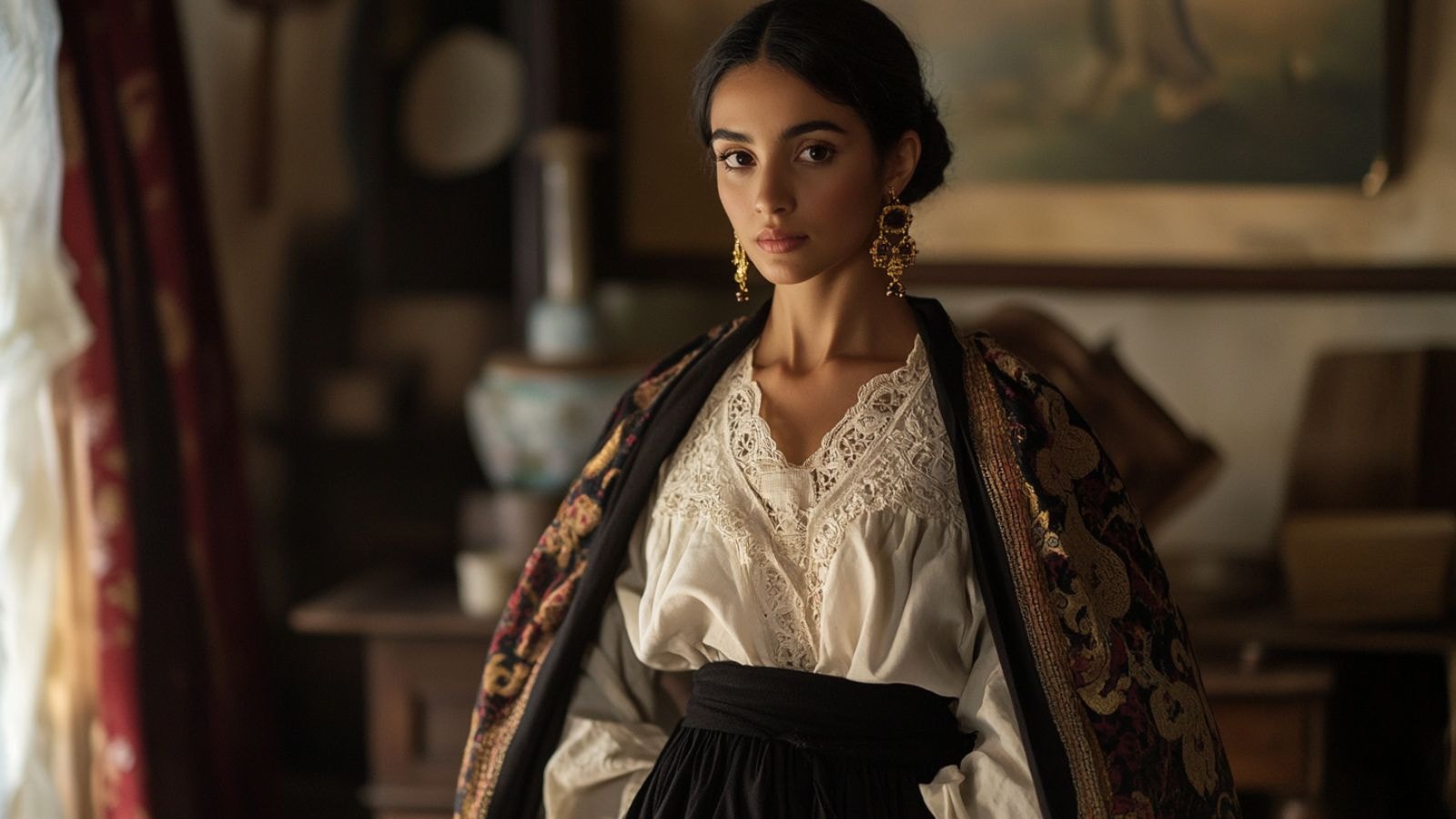
4. Coimbra Academic Dress (Traje Académico Feminino)
Similar to men’s academic suits but adapted for women—this includes a black skirt or trousers, a white shirt, a tie or bow, and the iconic black cape.
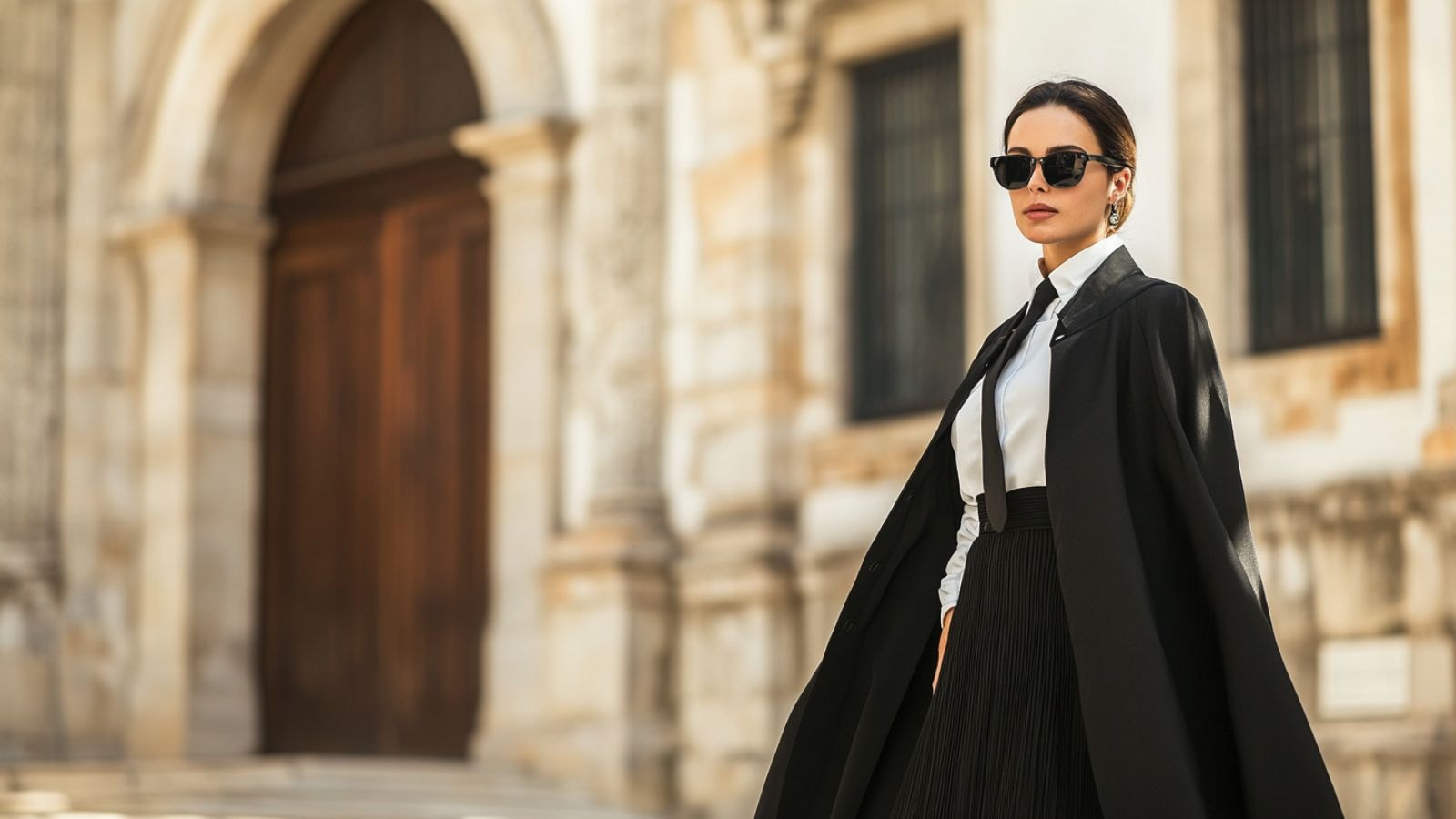
5. Ranchera Alentejana (Female Rancher Style)
Women in Alentejo might wear a long skirt, sturdy blouse, and a brimmed hat similar to the men’s, but often with feminine embroidery and a decorative belt or sash.
This ensemble reflects a harmonious blend of practicality and refined cultural expression. The intricate embroidery and decorative belt are not merely decorative elements; they carry symbolic motifs that celebrate local folklore and the enduring strength of rural women. This attire not only caters to the demands of daily life but also serves as a vibrant expression of regional identity, embodying both resilience and grace during festive occasions and everyday work alike.
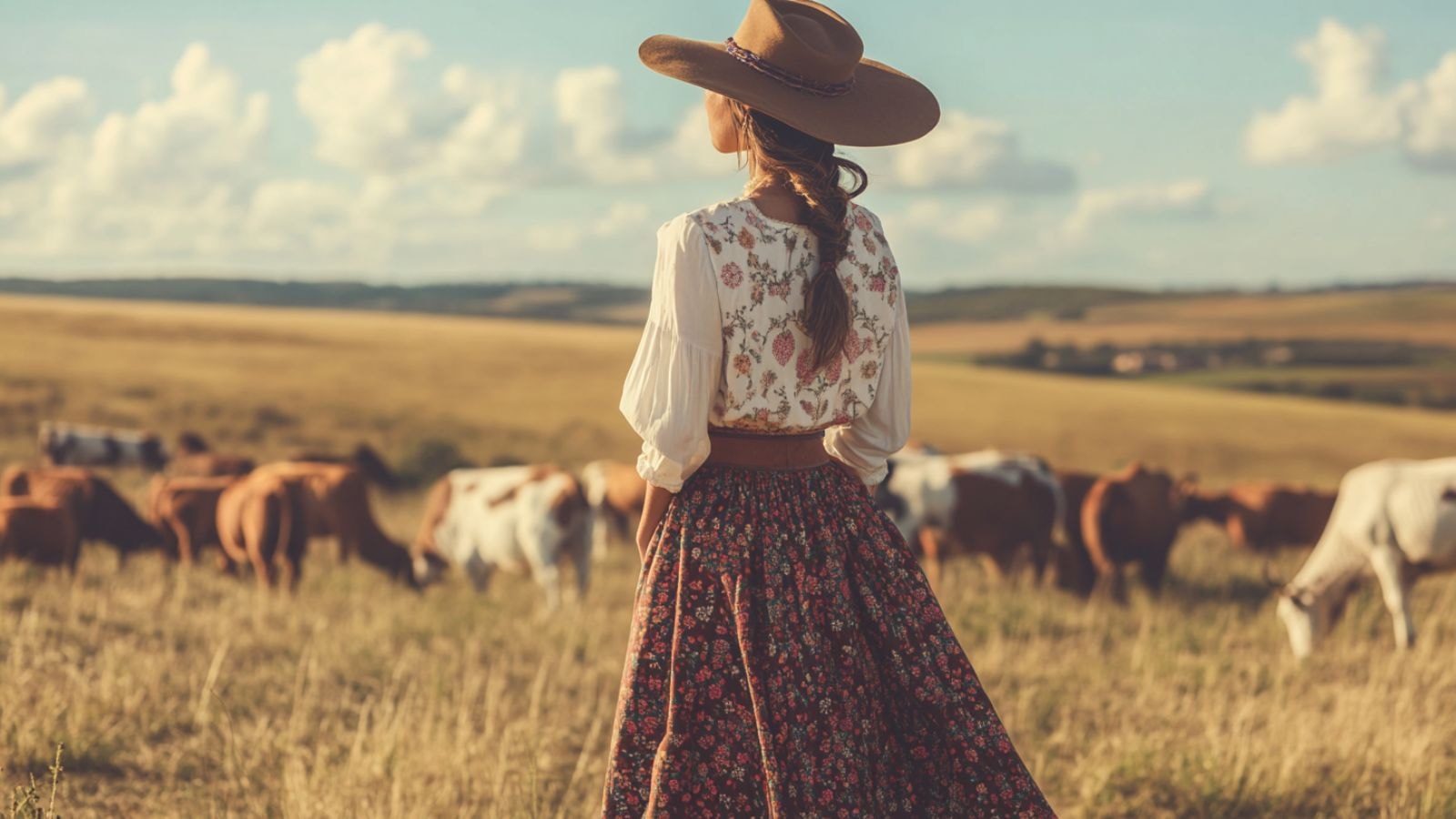
6. Traditional Madeira Costume (Traje Madeirense)
The Madeiran women’s costume typically features a striped, pleated skirt in bold colors, a matching bodice, and a small cap called a “carapuça.”

7. Fado Singer’s Ensemble
Although not a strict regional costume, the attire associated with Fado often includes a long black dress or skirt and a black shawl, symbolizing the soulful genre.

8. Arraiolos-Inspired Dress
Similar to the men’s vest, Arraiolos patterns can also be found on women’s dresses or aprons, often showcasing floral or geometric embroidery.
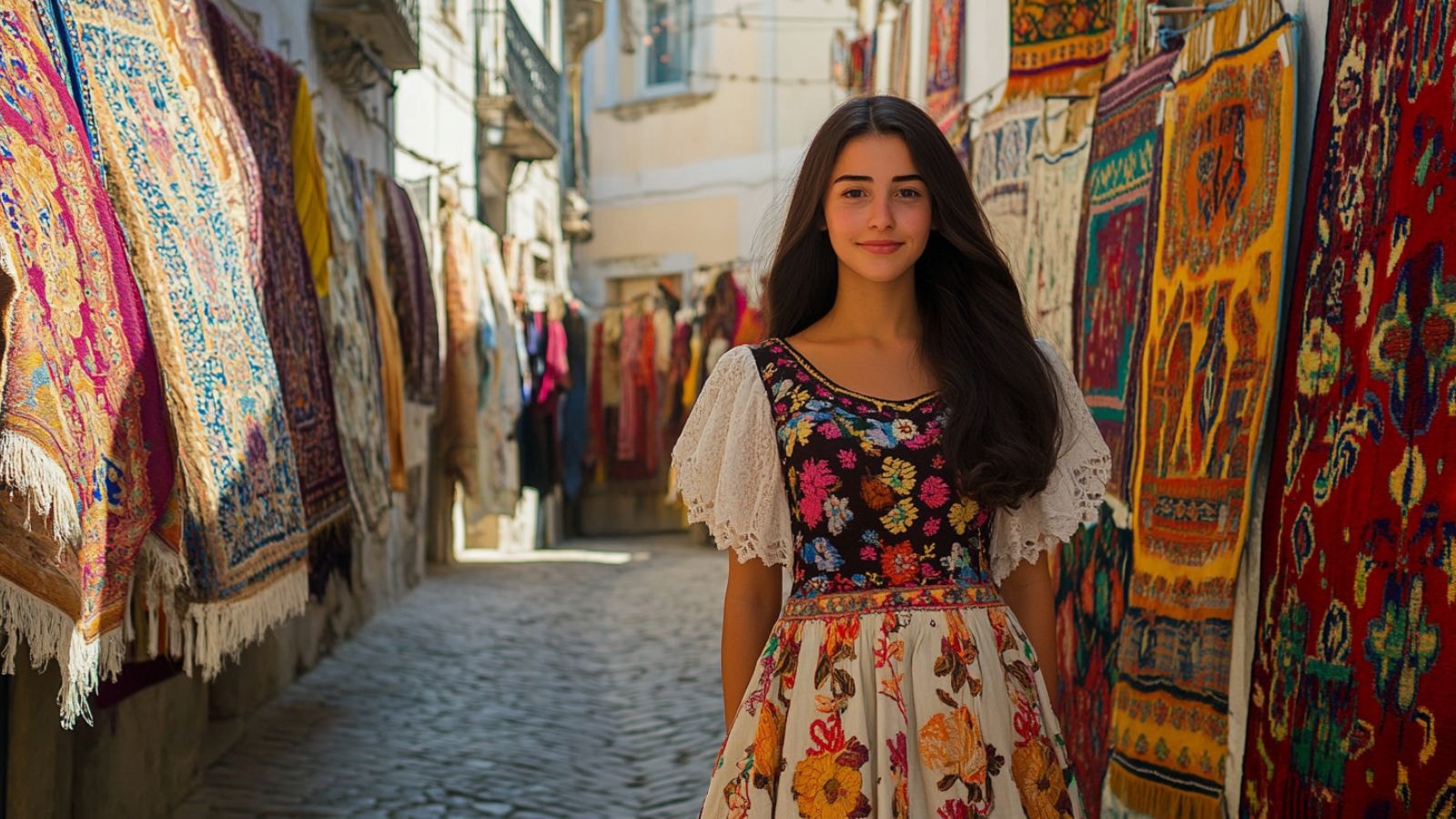
9. Traje de Festas de Lisboa (Lisbon Festivities Attire)
During the Festas de Lisboa (notably in June for Santo António), women sometimes wear colorful skirts, floral blouses, and accessories that nod to the city’s celebratory atmosphere.
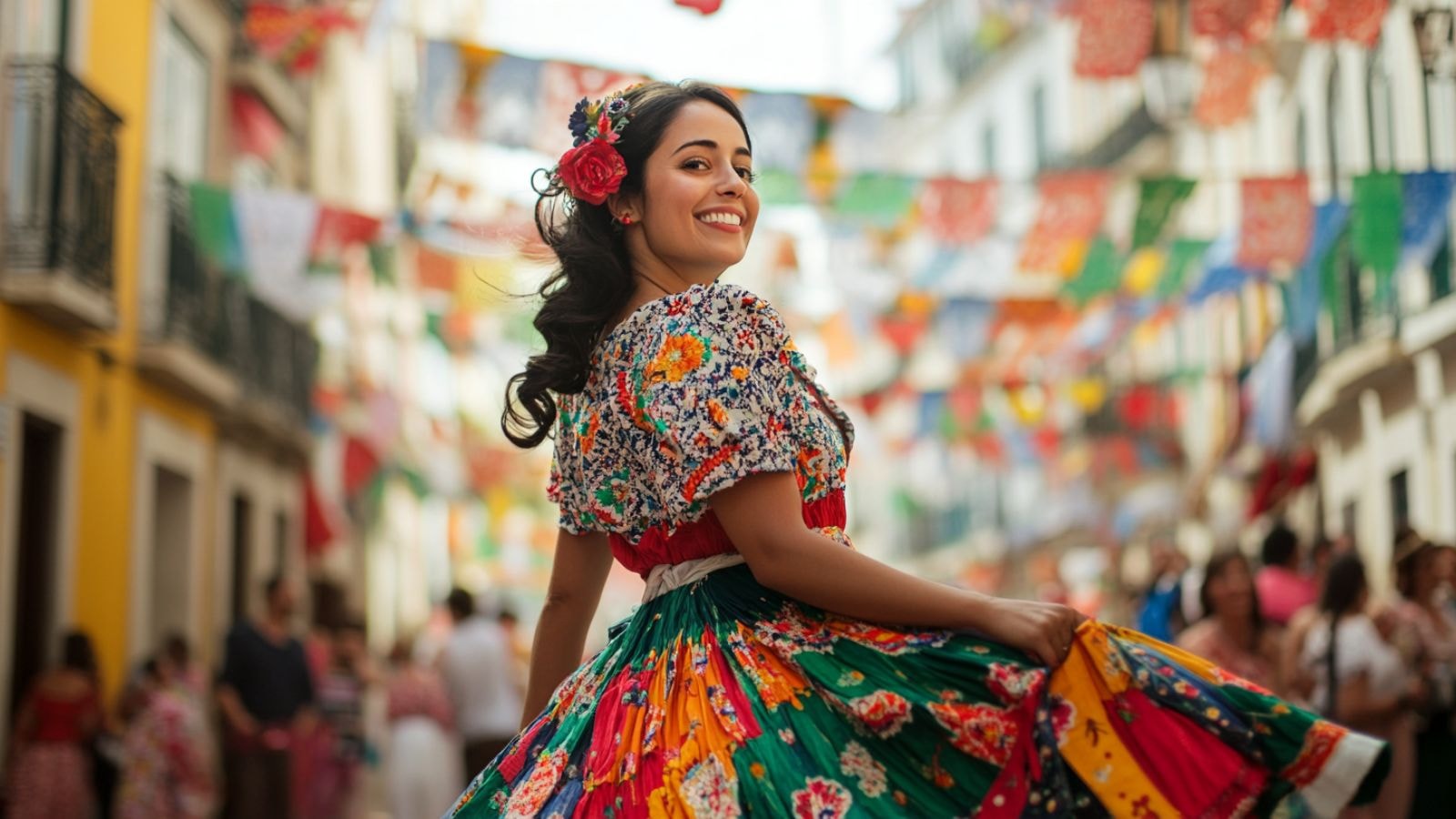
10. Bordado de Castelo Branco (Castelo Branco Embroidery Dress)
Castelo Branco is renowned for its distinctive embroidery (bordado), often featuring silk thread on linen, displaying elaborate floral and animal motifs.
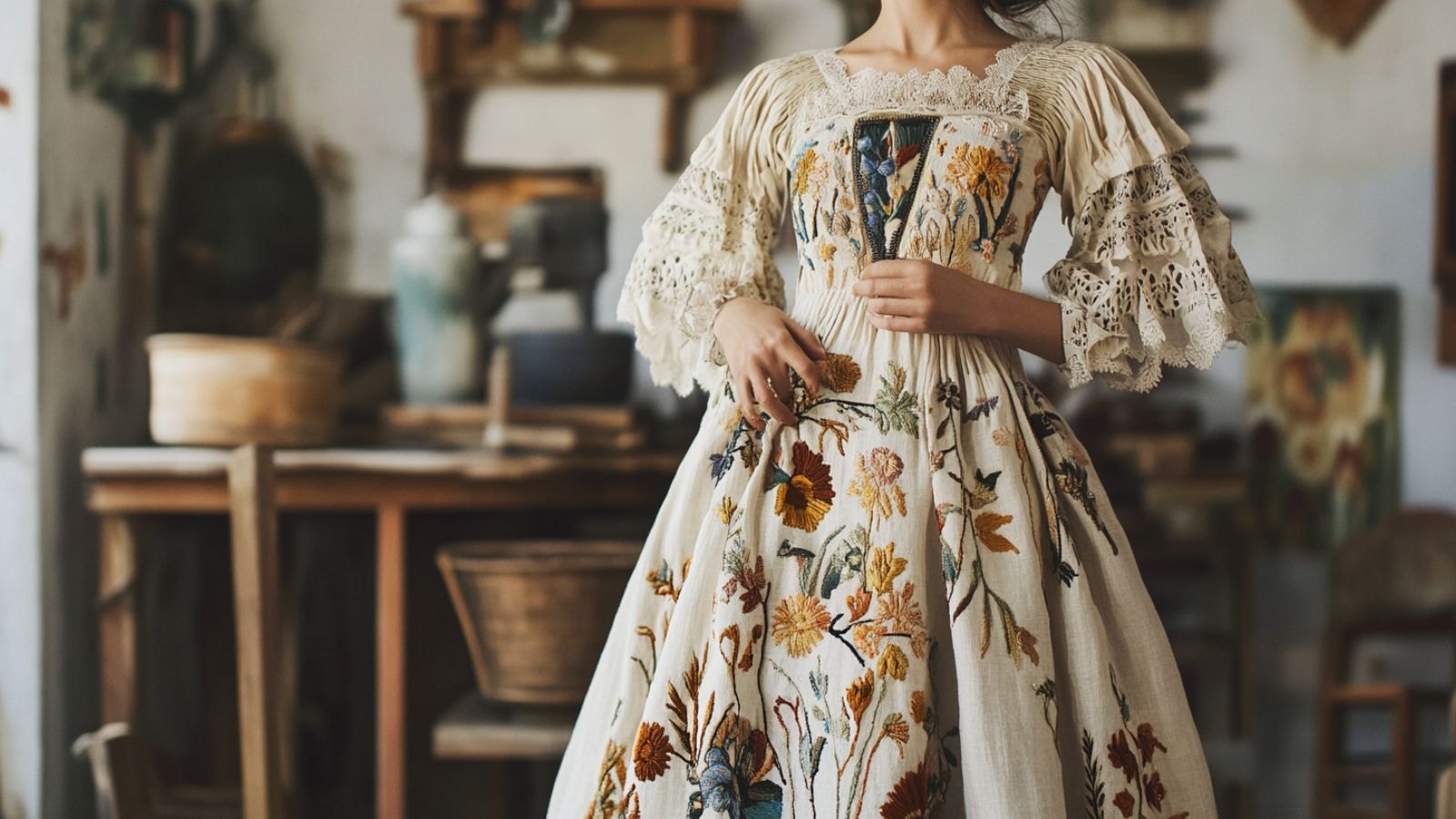
Conclusion
In Portugal, traditional dress is an essential part of cultural identity and a vibrant reflection of Portuguese culture. These colourful and rich costumes often feature intricate patterns and can include long pure gold earrings that add an elegant touch to the overall traditional attire. Whether showcased during special occasions or proudly worn as regional dress, traditional costumes such as traditional portuguese clothing embody the heritage passed down through generations.
From the iconic traditional portuguese dress to various forms of traditional portuguese costumes, each ensemble tells the story of its community’s history. These rich costumes also highlight the enduring craftsmanship and unity that connect different regions under one cultural tapestry. Ultimately, traditional clothing stands as a timeless reminder of Portugal’s deep-rooted passion for preserving its past while celebrating the present.
